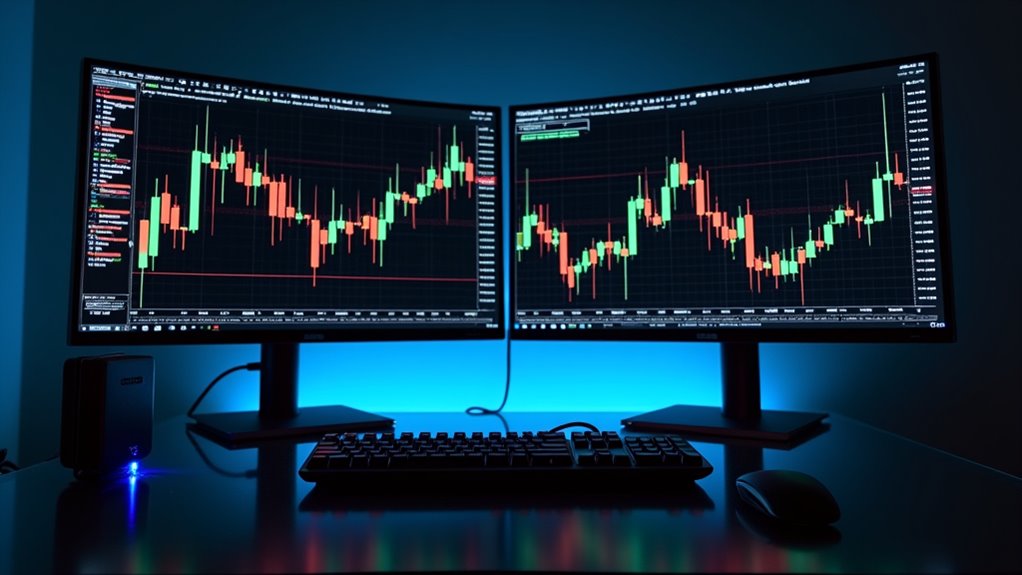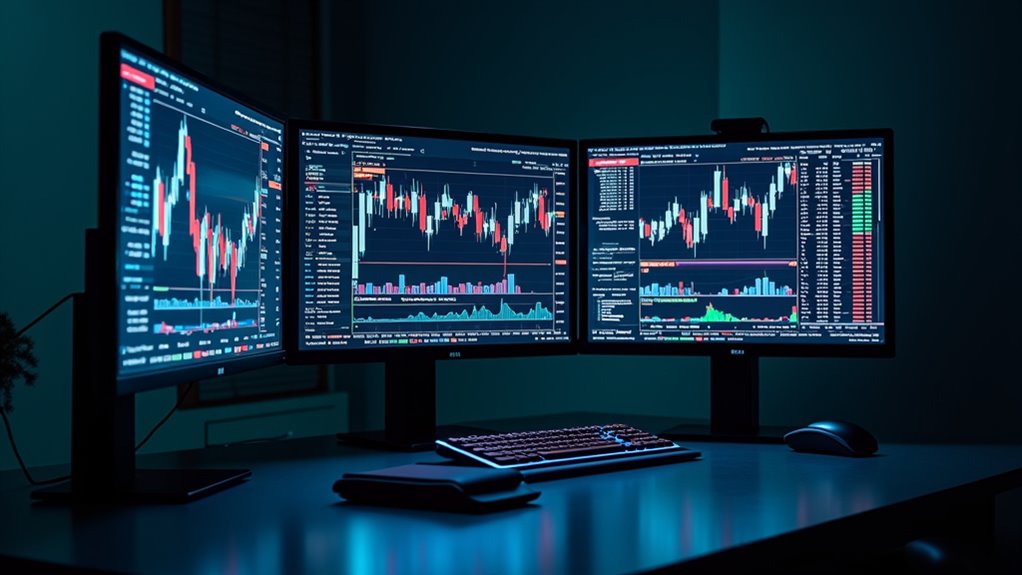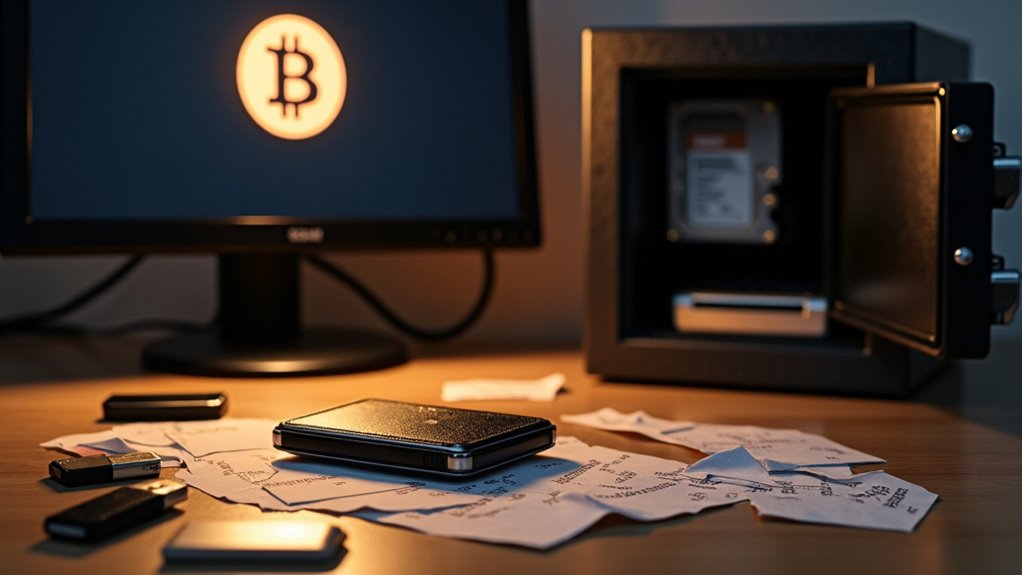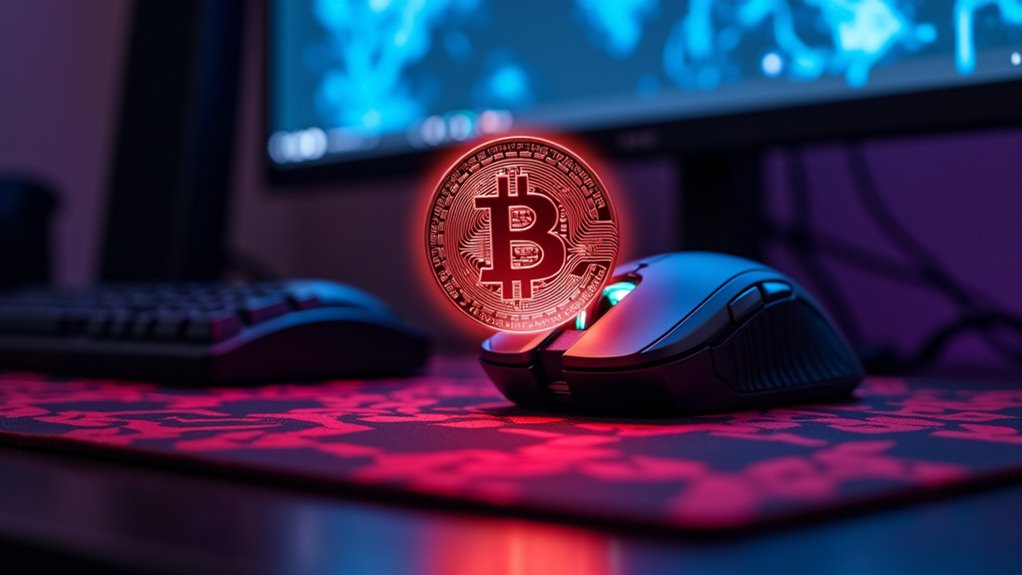Cryptocurrency trading typically involves registering with a platform, choosing an order type, and executing a trading strategy. Exchanges come in three flavors – centralized, decentralized, and hybrid – each with its pros and cons. Traders can opt for peer-to-peer marketplaces, vary their portfolios, or plunge into automated trading techniques. Whether it’s market orders, limit orders, or stop-loss orders, traders need to stay on top of their game to navigate the perpetually turbulent crypto market, and if they want to stay afloat, they’ll need to keep exploring beyond the basics.

Cryptocurrency trading: the Wild West in digital finance. It’s a 24/7 free-for-all where traders aim to profit from price changes by buying low and selling high.
To get in on the action, you’ll need to register, verify your identity, and connect a secure wallet for deposits and withdrawals.
You’ve got four main order types to choose from: market orders executed immediately, limit orders that wait for a particular price, stop orders designed to limit losses, and often confused stop-limit orders.
Oh, and don’t forget the order fees that vary by platform and order type.
Trading strategies abound, from day trading for short-term gains, which relies on technical analysis to gain small profits from temporary price fluctuations.
To swing trading for medium-term trends.
Scalping involves making multiple small trades throughout the day, each for slight profits.
Long-term investors often practice HODLing to weather market volatility and capture significant gains.
Arbitrage exploits price gaps between exchanges or markets.
Automated trading uses algorithms or bots to execute trades automatically, often for high-frequency or arbitrage strategies.
Diversifying your portfolio by trading various asset classes can hedge against market risks.
Exchanges come in three flavors: centralized, decentralized, and hybrid.
Centralized exchanges operate like companies, holding custody of assets and enforcing policies.
Decentralized exchanges are peer-to-peer platforms powered by smart contracts, often non-custodial.
Hybrid exchanges combine the best of both realms.
Liquidity and privacy are the trade-offs between these exchange types.
Peer-to-peer trading allows users to trade directly with each other, with platforms acting as escrow for security.
Payment methods vary, and anonymity levels differ.
Dispute resolution relies on escrow systems and user ratings.
P2P trading enables trading in regions with restricted access to exchanges.
Lastly, traders use technical analysis to predict price movements and fundamental analysis to evaluate investment decisions.
Risk management is vital, with instruments like stop-loss orders and position sizing.
Cryptocurrency trading is a complex, fast-paced realm that demands attention, strategy, and caution.
Fasten your seatbelt, because it’s about to get wild.
Frequently Asked Questions
What’s the Minimum Amount to Start Trading Cryptocurrency?
The minimum amount to start trading cryptocurrency, with some exchanges allowing deposits as low as $1, although $10 to $20 are common minimums, and market conditions may fluctuate these requirements.
Can I Trade Cryptocurrency With a Debit Card?
She can trade cryptocurrency with a debit card through exchange platforms or peer-to-peer trading, offering convenience, flexibility, and security, but may face fees, limitations, and security risks, depending on the exchange and debit card issuer.
Are Cryptocurrency Exchanges Regulated by Governments?
Cryptocurrency exchanges face varying levels government oversight, with some countries enforcing stricter controls, while others, the US, struggle with exhaustive regulation, exchanges to navigate shifting regulatory terrains.
How Do I Protect My Cryptocurrency From Hackers?
To protect cryptocurrency from hackers, one should employ secure storage measures, authentication, and access controls, while remaining vigilant through continuous monitoring, staying informed, and adapting to emerging threats.
Can I Use Cryptocurrency to Purchase Physical Goods?
She can use cryptocurrency to purchase physical goods from merchants who accept it, although legal and regulatory challenges, high transaction fees, and volatility risks may affect the transaction.









